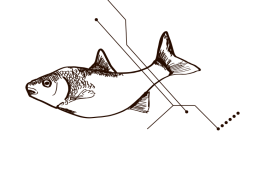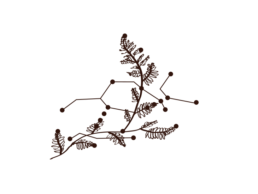Homepage
78 organizations call on the European Commission to enact a temporary ban on the novel Gene Drive technology
Gene Drive technology: Species extinction through genetic engineering?
In an open letter initiated by Greenpeace EU, Friends of the Earth Europe, IFOAM EU and the German initiative Save Our Seeds, 78 environmental, agricultural, animal welfare and development aid organizsations from all over Europe are calling on the EU Commission to outlaw the release of so-called Gene Drive Organisms in the EU and internationally. With this new application of genetic engineering, entire animal populations and species in nature could be reprogrammed or eradicated.
Enabled by the genetic engineering method CRISPR/CAS9, mosquitoes, mice, fruit flies and other organisms can be manipulated in the laboratory to pass on a certain trait and the mechanism for genetic manipulation to all offspring and across generations. In this way, Gene Drive Organisms can replace their relatives in nature. The Gene Drive trait also asserts itself when it is deadly to the survival of the species – thereby ovveriding the normal rules of evolutionary selection.
The signatory organisations are calling on the EU to advocate a global moratorium on the release of Gene Drive Organisms at the next Conference of the Parties (COP 15) to the UN Convention on Biological Diversity (CBD). The European Parliament had already called for such a moratoirum in a resolution from January this year, responding to a call from over 200 signatories from Europe and worldwide.
"The loss of biodiversity is one of the greatest challenges of our time. While the risks of Gene Drive technology have not yet been scientifically assessed, it could have a massive impact on already damaged ecosystems. It is irresponsible to expose species and ecosystems to further risks“ explains the initiator of the European "Stop Gene Drives" campaign, Mareike Imken from the German initiative Save Our Seeds.
She adds: „The EU Commission recently presented its biodiversity strategy, with which it wants to make the EU a global pioneer for the protection of biodiversity and put an end to the ongoing mass extinction of species. The Gene Drive technology however is designed to drive wild populations and species into self destruction. The use of such a technology contradicts the aim of biodiversity conservation and the precautionary principle, which is the basis for international and EU nature conservation law. A global moratorium would give us the time to assess environmental and health risks, publicly evaluate and discuss this technology and to establish missing regulations and global decision-making mechanisms. In the meanwhile, noone in the world should use this technology."
The open letter signed by 78 organizations can be found here.
Further reading:
Further information on gene drives:
www.stop-genedrives.eu/en
Parties in favor of a gene drive moratorium
In the forefront of the European elections, the SPD, Die LINKE and Die Grünen are calling for a gene drive moratorium. The CDU wants to examine the necessity of a moratorium.
In a poll of the top candidates for the European elections on their attitudes towards new genetic engineering and gene drives, the majority of the major German parties are concerned about the risks that could result from the release of gene drive organisms into nature.
The SPD considers a release of gene drive organisms to be "not compatible with the principles and objectives of the Convention on Biological Diversity".
The CDU/CSU points to "considerable risks" posed by transgenic gene drive organisms, particularly with regard to the potential to spread.
In its response, the Left Party emphasised the difficulty of risk assessment and the lack of retrieval options.
Bündnis90/Die Grünen write that it is "not responsible to release genetically modified populations with such a depth of intervention into the environment". The consequences cannot be estimated and a sensible fight against diseases must not change entire ecosystems. A release would be "uncontrollable and irreversible".
Regarding the requested gene drive moratorium the parties write:
CDU/CSU: "In the EU, there are no applications for field trials with organisms that have been modified using gene drives. There are also no known plans in this direction. Nevertheless, the CDU and CSU are in favor of additional regulations or even the necessity of a moratorium being examined".
SPD: "We advocate an international moratorium on gene drives because of the lack of knowledge, data and understanding with regard to their potential impact on biodiversity".
Bündnis90/Die Grünen: "We advocate a worldwide moratorium on the use of gene drives. This is necessary to comply with the precautionary principle and protect ecosystems."
DIE LINKE: "DIE LINKE therefore advocates an immediate moratorium against the release of GMOs in general and GMOs with gene drives in particular".
Unfortunately, the FDP did not answer our question.
Recommendation: Risk assessment of genetically modified organisms
Risk assessment of genetically modified organisms
Recommendation: Strengthen the precautionary principle in the risk assessment of genetically modified organisms in the EU through exclusion criteria.
A contribution by Dr. Christoph Then
The precautionary principle, as enshrined in EU Directive 2001/18, can only work if effective measures can actually be taken to protect the environment and human health in cases where this appears necessary. Retrievability (i.e. controllability in time and space) is a crucial prerequisite for this.
“Member states shall ensure, in accordance with the precautionary principle, that all appropriate measures are taken to avoid adverse effects on human health and the environment which might arise from the deliberate release or placing on the market of GMO” (EU Directive 2001/18, Article 1). As soon as evidence emerges for an actual risk to humans and the environment, emergency measures must be taken: “Member states shall ensure that emergency measures, such as suspension or termination of the placing on the market, are taken in the event of a serious risk […]” (EU Directive 2001/18, Article 23). In addition, there is the provision from Article 13 of the directive that marketing authorization may only be granted for ten years. Thereafter, the approval must be reviewed again on the basis of monitoring. If the genetically modified organism loses its approval, it must be removed from the environment again.
The release or placing on the market of genetically modified organisms whose spread cannot be controlled is fundamentally in conflict with these provisions. If a GMO can no longer be retrieved from the environment, the enacting of the precautionary principle becomes impossible.
In this context, the GeneTip project, funded by the German Federal Ministry of Education and Research (BMBF), was the first research project in Germany to address the prospective technology assessment of gene drive organisms. [1] One result of the project is the recommendation to introduce a new central mechanism for the risk assessment of GMO: the designation and definition of so-called reasons for concern (in simple terms, factually justified risks). Such reasons for concern are often identifiable at an early stage of research and development and could lead to the characterization of a GMO as “of particular concern”. To this end, the authors propose, among others, the following criteria for the identification of reasons for concern:
- Impossibility of making reliable forecasts
- Interventions in systems that are particularly critical for human health
- Interference with ecological systems that are pre-stressed or have tipping points
- Lack of technical maturity and reliability
- Particularly wide reach, to the point of global and irreversible spread of GMO
- The ability to spread in natural populations
According to the report of the GeneTip project, a characterization as a ‘GMO or construct of very high concern’ could lead to the same consequences as stipulated for substances regulated under the EU chemicals legislation REACH and the EU pesticides legislation, respectively. Here, the estimation of the spatial-temporal complexity or controllability plays an important role.
The REACH regulation states that “experience at international level shows that substances with persistent, bioaccumulative and toxic properties or with very persistent and very bioaccumulative properties are of particular concern.”[2] Therefore, REACH established appropriate criteria to define persistent, bioaccumulative and toxic substances, as well as substances that are particularly bioaccumulative and persistent.
The EU regulation on the authorization of pesticides integrates these criteria for POP (persistent organic pollutant), PBT (persistent, bioaccumulative, toxic) and vPvB (very persistent, very bioaccumulative) into the decision-making process as exclusion criteria, which mean that authorization can generally be refused and the authorization process is not continued.[3] The decisive factor is not only the toxicity of a substance, but also its behavior and fate in the environment. If a substance is classified as vPvB, it cannot be approved under this EU regulation, even if long-term damage has not been proven.
According to the final report of GeneTip, such cut-off criteria could also be helpful in the approval of GMO and gene drive organisms. If genetically modified organisms escape spatiotemporal controllability because they can replicate in natural populations without effective control of their persistence and spread, a sufficiently reliable risk assessment would not be possible. The approval process cannot continue and a release of the GMO cannot be authorized.
The results of GeneTip were taken into account by the expert group (AHTEG) advising the Conference of the Parties to the UN Convention on Biological Diversity. Among other things, unforeseen effects that occur only after several generations are named as a specific challenge for risk assessment.[4] In contrast, the European Food Safety Authority (EFSA) largely ignores these challenges in its report submitted in November 2020.
Dr. Christoph Then
Dr. Christoph Then is head of the Institute for Independent Impact Assessment in Biotechnology (TestBiotech) and co-author of the GeneTip project. Testbiotech is concerned with impact assessment in the field of biotechnology, calls for and promotes independent research, examines ethical as well as economic consequences, and tests risks to humans and the environment. Testbiotech provides industry-independent expertise and thus aims to strengthen the decision-making competence of society.
——————
[1] 121 Gene Tip website (without year). Testbiotech e.V. Institute for Independent Impact Assessment of Biotechnology. BioTip pilot study: Gene Drives at Tipping Points – Precautionary Technology Assessment and Governance of New Approaches to Genetically Modified Animal and Plant Populations. Online: https://www.genetip.de/en/biotip-pilot-study/ [last accessed Dec. 07, 2020].
[2] EUR-Lex Website (2006). Publications Office of the European Union. Regulation (EC) No 1907/2006 of the European Parliament and of the Council of 18 December 2006 concerning the Registration, Evaluation, Authorisation and Restriction of Chemicals (REACH), establishing a European Chemicals Agency, amending Directive 1999/45/EC and repealing Council Regulation (EEC) No 793/93 and Commission Regulation (EC) No 1488/94 as well as Council Directive 76/769/EEC and Commission Directives 91/155/EEC, 93/67/EEC, 93/105/EC and 2000/21/EC. Online: https://eur-lex.europa.eu/legal-content/EN/TXT/PDF/?uri=CELEX:32006R1907&from=EN [last accessed: 07.12.2020]
[3] EUR-Lex website (2009). Publications Office of the European Union. Regulation (EC) No 1107/2009 of the European Parliament and of the Council of 21 October 2009 concerning the placing of plant protection products on the market and repealing Council Directives 79/117/EEC and 91/414/EEC. Online: https://eur-lex.europa.eu/legal-content/EN/TXT/?uri=celex:32009R1107 [last accessed Dec. 07, 2020].
[4] Convention on Biological Diversity. Ad Hoc Technical Expert Group on Risk Assessment (2020). Report of the Ad Hoc Technical Expert Group on Risk Assessment. CBD/CP/RA/AHTEG/2020/1/5. 15. April 2020, Montreal, Canada. Online: https://www.cbd.int/doc/c/a763/e248/4fa326e03e3c126b9615e95d/cp-ra-ahteg-2020-01-05-en.pdf
Multimedia
Multimedia
What is a gene drive?
This short animation explains how the Gene Drive technology using CRISPR/Cas works.
Produced by SOS
Gene Drive Documentary
15 minute documentary on Gene Drive technology with statements from experts from around the world.
Produced by Save Our Seeds (SOS) in cooperation with European Network of Scientists for Social and Environmental Responsability (ENSSER), Federation of German Scientists (VDW/FGS) and Critical Scientists Switzerland (CSS)
Gene Drives – Protecting People and Nature through Genetic Extermination?
Video recording of an online conference on October 15, 2020 organised by Heinrich Böll Foundation.
A Question of Consent: Exterminator Mosquitos in Burkina Faso
This video documents conversations with residents of the areas where Target Malaria is conducting tests with gene drive mosquitoes in Burkina Faso, as well as opposition from civil society groups in the region.
Produced by: ETC Group in co-operation with COPAGEN, Terre à Vie, CCAE, FENOP and Interpares
Gene Drives in Africa: Civil Society Speaks Out
Produced by: African Center for Biodiversity
Gene Drive Technology: Powerful and destructive
Produced by: SWISSAID



